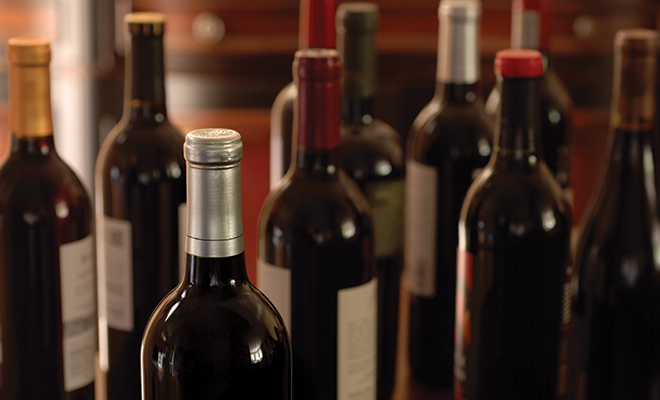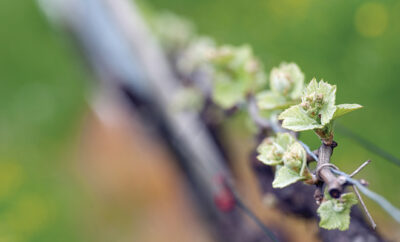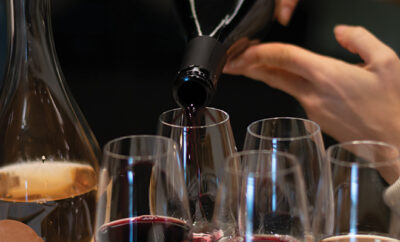
Is your wine worth gold?
Last month we created our own wine bar filled with wine favorites and wine gadgets. What makes us choose one wine opening gadget over another? Brand, price or recommendation by staff? Our wine selections are similar, whether we select based on brand familiarity, value or marketing hype.
It’s getting to be award season in the music, film and wine industry including highly respected wine competitions such as the San Francisco Chronicle Wine Awards that kick off preparations and submissions to state and county wine competitions. What is the chance that a 96-point wine will not receive any medals at the county or state fair? Certainly, there are fame and subsequent value to any accolades bestowed on quality wines.
There are several notable state fair wine competitions held annually in California, New York, Virginia, Illinois and Texas, to name a few. It takes years of integrity and consistent judging criteria to create a prestigious and professional wine competition such as the California State Fair Commercial Wine Competition, which is the oldest in the state, dating back to the Gold Rush era in the 1800s.
The biggest difference between awards by paneled wine judges and wine scores from wine industry publications is most likely subject to the criteria and individual tastes of the panelists. Paneled wine judges are writers, educators, winemakers and professionals across the wine industry who are following regional competition-specific scoring guidelines that may not consider price points. Wine publications specialize in classes of wine in a variety of categories such as price and country of origin; these promote selected wine reviews and scores possibly ranging from 80 to 100 points in categories such as Best Under $50. Both methods are very helpful in crafting the perfect wine list for the discriminating oenophile.
State fair competitions will have medals for categories such as Best in Show or Best Sparkling, and may also award varietal-specific medals for Best Cabernet Sauvignon, for example. With a large number of submissions, the competition is initially categorized by red and white wines and the region of origin before allotting awards for each variety. In California alone, there are 11 regions of wine producers in multiple categories striving to achieve gold, silver or bronze by the judging panel led by a chief judge, an immensely challenging yet gratifying role of leadership in the competition. Not all the judges will come to the exact same ranking for a particular wine, so cumulative scores may be used. When all the panel judges come to a unanimous ranking, a “double” is awarded, hence a “double-gold” winner is bestowed.
After all the individual varietal award winners are selected, then a Best of Show award goes to the best of the award winners, quite an acknowledgment of a wine that represents the best overall in style, varietal and region. Winery of the Year may be awarded to the winery that has the best overall showing at the competition. Achieving a medal from locally respected wine professionals is often more valuable to the wine consumer because the notion of first, second and third is instilled in our American lives. Wine scores allow for an international reviewing system that permits pinot grigio produced in Italy to be scored against the same varietal produced in the United States.
Organizations such as the Beverage Tasting Institute’s Tastings World Wine Value Challenge™ sponsor an annual competition that rates wines with a retail price point of $20 or less. Judges use a proprietary blind tasting method in a dedicated tasting lab at the Institute’s headquarters in Chicago. The organization also tastes wines monthly according to a published schedule for submitted wines. Results are then posted on tastings.com.
Does the winemaker know how the wine will score before the bottling process? The chance factor exists in every vintage for every wine region. Part of the fun is experiencing how a particular vintage evolves in the bottle and shows up at review time. Either way, the winning winemaker and winery have tangible accolades inside the tasting room and out.
Can a gold medal wine have zero points? Absolutely. Tasting panels can only score the wines that are provided to them for review. It’s quite possible that particular Santa Ynez syrah hasn’t been discovered yet. But when the double gold medal is bestowed, the wine’s reputation rises, creating more awareness with wine professionals, restaurants and consumers looking to explore great new wines.
The cost to submit a wine to the various competitions varies. When the winemaker submits a wine per category, total submission costs add up quickly. Marketing those results comes down to promoting critical acclaim versus local popularity of county and state competitions.
Is your wine worth its weight in gold? When we consider that the value of gold is more than $1,000 per ounce, that would be quite the zinfandel indeed! Alas, in the end, you love your 2014 malbec from Argentina. You just do and that’s all that matters! HLM
Sources: everyvine.com, trade.tastings.com and winebusiness.com.







